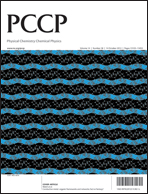We introduce a laser-induced electron diffraction method (LIED) for imaging ultrafast dynamics of small molecules with femtosecond mid-infrared lasers. When molecules are placed in an intense laser field, both low- and high-energy photoelectrons are generated. According to quantitative rescattering (QRS) theory, high-energy electrons are produced by a rescattering process where electrons born at the early phase of the laser pulse are driven back to rescatter with the parent ion. From the high-energy electron momentum spectra, field-free elastic electron-ion scattering differential cross sections (DCS), or diffraction images, can be extracted. With mid-infrared lasers as the driving pulses, it is further shown that the DCS can be used to extract atomic positions in a molecule with sub-angstrom spatial resolution, in close analogy to the standard electron diffraction method. Since infrared lasers with pulse duration of a few to several tens of femtoseconds are already available, LIED can be used for imaging dynamics of molecules with sub-angstrom spatial and a few-femtosecond temporal resolution. The first experiment with LIED has shown that the bond length of oxygen molecules shortens by 0.1 Å in five femtoseconds after single ionization. The principle behind LIED and its future outlook as a tool for dynamic imaging of molecules are presented.

You have access to this article
 Please wait while we load your content...
Something went wrong. Try again?
Please wait while we load your content...
Something went wrong. Try again?


 Please wait while we load your content...
Please wait while we load your content...